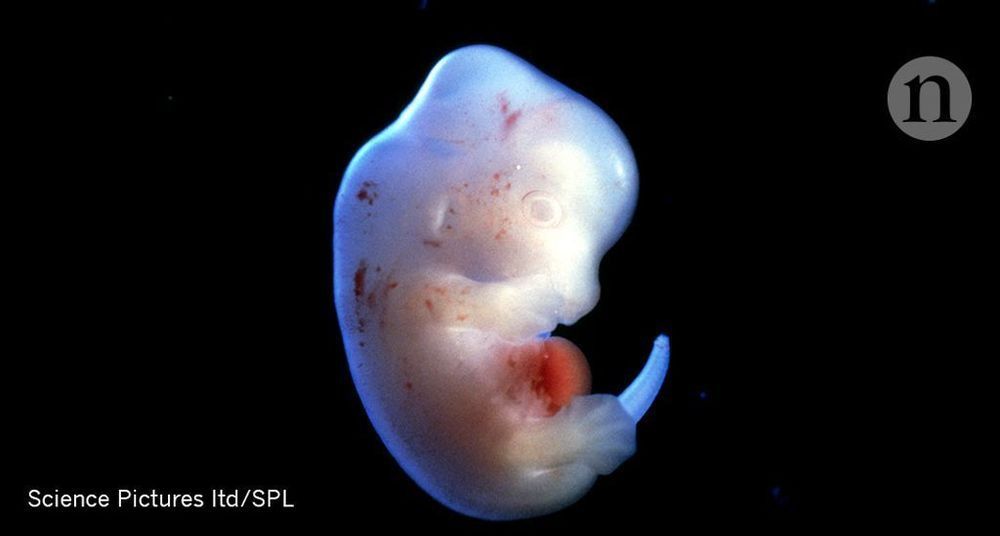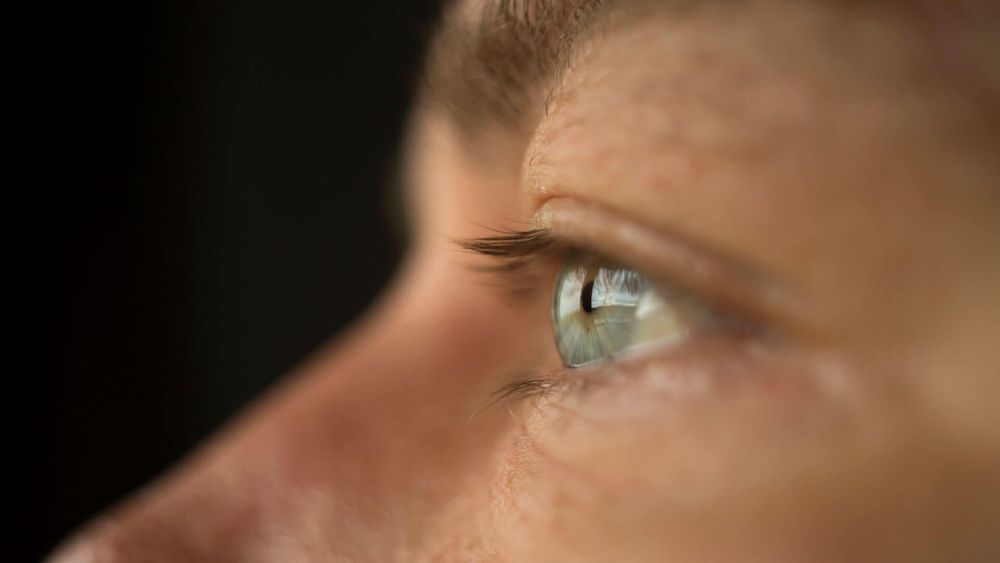Most soft robots are controlled manually or pre-programmed but the lenses mimic the natural electric signals in the human eyeball that are active even when the eye itself is closed.


Most soft robots are controlled manually or pre-programmed but the lenses mimic the natural electric signals in the human eyeball that are active even when the eye itself is closed.

But getting human cells to grow in another species is not easy. Nakauchi and colleagues announced at the 2018 American Association for the Advancement of Science meeting in Austin, Texas that they had put human iPS cells into sheep embryos that had been engineered not to produce a pancreas. But the hybrid embryos, grown for 28 days, contained very few human cells, and nothing resembling organs. This is probably because of the genetic distance between humans and sheep, says Nakauchi.
The research could eventually lead to new sources of organs for transplant, but ethical and technical hurdles need to be overcome.

Medicine has a “Goldilocks” problem. Many therapies are safe and effective only when administered at just the right time and in very precise doses – when given too early or too late, in too large or too small an amount, medicines can be ineffective or even harmful. But in many situations, doctors have no way of knowing when or how much to dispense.
Now, a team of bioengineers led by UC San Francisco’s Hana El-Samad, PhD, and the University of Washington’s David Baker, PhD, have devised a remarkable solution to this problem – “smart” cells that behave like tiny autonomous robots which, in the future, may be used to detect damage and disease, and deliver help at just the right time and in just the right amount.
Skeletal muscle is important not only for locomotion but also for regulating metabolic function. Lahiri et al. studied the interactions between the gut microbiota and skeletal muscle in mice. They identified genes and signaling pathways involved in the regulation of skeletal muscle mass and function that responded to cues from the gut microbiota. Additional biochemical and functional analysis also revealed the influence of the gut microbiota on the function of neuromuscular junctions. These findings open the door to a better understanding of the role of the gut microbiota in the mechanisms underlying loss of muscle mass.
The functional interactions between the gut microbiota and the host are important for host physiology, homeostasis, and sustained health. We compared the skeletal muscle of germ-free mice that lacked a gut microbiota to the skeletal muscle of pathogen-free mice that had a gut microbiota. Compared to pathogen-free mouse skeletal muscle, germ-free mouse skeletal muscle showed atrophy, decreased expression of insulin-like growth factor 1, and reduced transcription of genes associated with skeletal muscle growth and mitochondrial function. Nuclear magnetic resonance spectrometry analysis of skeletal muscle, liver, and serum from germ-free mice revealed multiple changes in the amounts of amino acids, including glycine and alanine, compared to pathogen-free mice. Germ-free mice also showed reduced serum choline, the precursor of acetylcholine, the key neurotransmitter that signals between muscle and nerve at neuromuscular junctions.

1. The 4 main things happening in Hyperbaric oxygen treatment: 1.- A decrease of inflammation 2.- An increase in the amount of oxygen in circulation and reversing hypoxia. 3.- Stimulate the release of stem cells from the brain along with the bone-derived stem cells. 4.- Kill infection. Why it matters for regenerative and dementia treatment? Listen to Dr. Scott Sherr explaining in detail in http://www.mendelhaim.com/podcast/2. For more information on Dr. Scott’s work go to https://www.hyperbaricmedicalsolutions.com/integrative-hbot/scott-sherr.
2. Raising money for academic research is a hard point, according to all of my guests, but even when we talk about Hyperbaric treatment there is a lack of money and the number of chambers declines in u.s. In Israel by the way, the demand is increasing and it takes a few months waiting in lines to start getting the treatment, this can turn into a big business opportunity in my opinion as to the risk for such research on participants is not as big as other medical research.
3. Longevity investment is a relatively new field and is lack of a method to invest by, the Three criteria that Sergey Young from the Longevity Vision Fund examine before investing in new companies are 1- will the product be affordable to touch millions of people’s lives and not only help the rich. 2- Looking for sectors that enjoy the technological exponential development paste such as AI, early diagnostics, stem cells, warbles, and organ transplants. 3 — Network, if you are a new startup and trying to raise from The Longevity vision fund, question yourself before, Do you have partners that can market your product such as big pharma or health care chain or a big manufacturer, do you collaborate with the best academic institutes in the longevity research. Go listen to the full episode Mission Alpha with Sergey Young on http://www.mendelhaim.com/podcast/3

Gene editing is advancing at a faster pace than most of us can keep up with. One significant recent announcement was gene editing tool CRISPR’s application to non-genetic diseases thanks to a new ability to edit single letters in RNA.
Even as CRISPR reaches milestones like this, scientists continue to find new uses for it to treat genetic conditions. The next one that will hit clinics is a CRISPR treatment for a form of blindness called Leber congenital amaurosis (LCA).
Having been approved by the FDA in December, the treatment will be the first of its kind to be trialed in the US.

Scientists at work in laboratory. Photo: Public domain via Wikicommons.
CTech – When chemistry Nobel laureate Michael Levitt met his wife two years ago, he didn’t know it would lead to a wonderful friendship with a young Israeli scientist. When Israeli scientist Shahar Barbash decided to found a startup with the aim of cutting down the time needed to develop new medicine, he didn’t know that a friend’s wedding would help him score a meeting with a man many want to meet but few do. But Levitt’s wife is an old friend of Barbash’s parents, and the rest, as they say, is history.
One of the joys of being an old scientist is to encourage extraordinary young ones, Levitt, an American-British-Israeli biophysicist and a professor at Stanford University since 1987, said in a recent interview with Calcalist. He might have met Barbash because his wife knew his family, but that is not enough to make him go into business with someone, Levitt said. “I got on board because his vision excited me, even though I thought it would be very hard to realize.”

An international team of researchers has found that the gut microbiota in mice play an influential role in skeletal muscle mass maintenance and function. In their paper published in the journal Science Translational Medicine, the group describes their experiments with wild and lab-raised mice, and what they found.
Over the past several years, scientists have found that gut microbiota in humans and other animals play a far bigger role in maintaining health than previously thought. In addition to processing food, the gut microbiome plays an important role in immunity and in regulating cholesterol and triglycerides. And imbalances in the gut microbiota have been associated with conditions such as Crohn’s disease, IBS and other inflammatory diseases. Now, the researchers with this new effort have found evidence that suggests the gut microbiome also plays a role in maintaining the right amount of skeletal muscle mass and its function—at least in mice.
Skeletal muscle is one of the three main types of muscle—the other two are cardiac and smooth. Skeletal muscle is very much what it sounds like—the collection of muscles that are connected to bones in the skeleton that control movement, most specifically, the limbs.

MILWAUKEE (AP) — A British cybersecurity expert credited with helping stop a worldwide computer virus in May 2017 won’t serve any additional time behind bars for creating malware years before he won international acclaim.
U.S. District Judge J.P. Stadtmueller sentenced 25-year-old Marcus Hutchins on Friday in Milwaukee to time served, with a year of supervised release. Stadtmueller said the virus Hutchins helped stop was far more damaging than the malware he wrote.
Hutchins pleaded guilty in May to developing and conspiring to distribute malware called Kronos from 2012 to 2015. Prosecutors dismissed eight charges in exchange for his plea.

On Friday afternoon, a volcano in southern Indonesia erupted, spewing ash as high as 650 feet into the air, according to the country’s National Board for Disaster Management.
The ash from the eruption of Mount Tangkuban Parahu landed as far as 6,500 feet away, reports ABC.
The volcano is situated approximately 18.6 miles north of Indonesia’s third largest city of Bandung in West Java. As of publication, no casualties have been disclosed. However, 9News reports that two individuals were taken to the hospital with “breathing difficulties.”